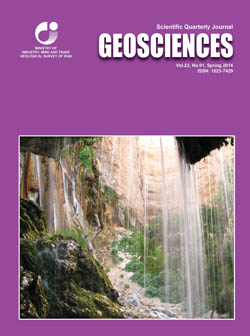Document Type : Original Research Paper
Authors
1 Ph.D. Student, Faculty of Earth Sciences, Shahrud University of Technology, Shahrud, Iran.
2 Associate Professor, Faculty of Earth Sciences, Shahrud University of Technology, Shahrud, Iran.
3 M. Sc., Faculty of Earth Sciences, Shahrud University of Technology, Shahrud, Iran.
Abstract
The Soltan Maydan Basaltic Complex indicates the most important, thickest, and most voluminous early Paleozoic magmatic activity in Iran outcropping in the eastern Alborz structural zone, in the north-northeast of Shahrud. This complex overlies the late Ordovician Ghelli Formation and is overlain by the early Devonian Padeha Formation. The field evidences show more than 50 lava flows erupting frequently in the sub-aerial and submarine environments. This complex comprises of a continuous fractional spectrum including basalt, basaltic andesite, trachybasalt and basaltic trachyandesite that has undergone medium to high degrees of alteration. The geochemical data and diagrams signify transitional to alkaline nature of the primary magma, genetic relationship among all rocks of this complex due to fractional crystallization, none or weak role of magmatic contamination in magma evolution, and generation of primary magma by 15-17 percent partial melting of an enriched garnet peridotitic mantle source in an intra-continental extensional rift setting. This tectonic setting is concordant with the known extensional rift setting governed on the Alborz and Central Iran zones during the early Paleozoic, especially late Ordovician-Silurian, primary stages of generation and development of the Paleotethys.
Keywords

